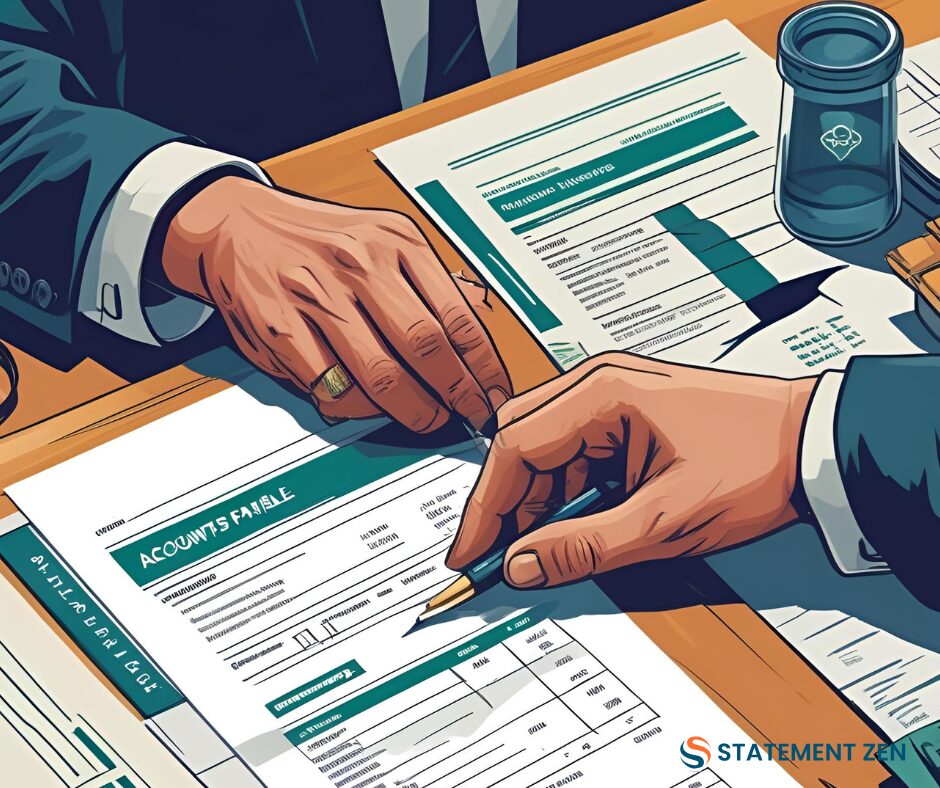Primary Keyword: AP matching
Secondary Keywords: accounts payable matching errors, statement matching issues
Related/LSI: reconciliation discrepancies, invoice mismatches, AP error prevention strategies
The Hidden Cost of AP Matching Errors
If you work in Accounts Payable, you know matching invoices, purchase orders, and statements isn’t glamorous. But what happens when the process goes wrong?
Small mismatches can snowball into overpayments, duplicate payments, supplier disputes, and compliance headaches.
The truth is, AP matching errors are not just an administrative nuisance—they’re a silent profit leak.
And in an era where automation tools can do the heavy lifting, continuing to rely on manual, error-prone processes is costing you more than you think.
At Statement Zen, we’ve helped finance teams slash their reconciliation discrepancies by over 70% simply by replacing inefficient workflows with smart automation. Let’s break down the most common AP matching mistakes and the strategies that will stop them for good.

1. Ignoring Discrepancies in Supplier Statements
One of the most frequent issues in AP matching is overlooking supplier statement mismatches—either because there’s no formal check in place or because teams assume the invoice data is already correct.
Why it happens:
- Supplier statements aren’t regularly compared to internal records.
- AP teams are under time pressure and focus only on invoice processing.
- Discrepancy reports are inconsistent or incomplete.
Why it’s a problem:
Unresolved statement mismatches often mask missing invoices or credit notes that could save your business money.
How to fix it:
- Establish a monthly statement reconciliation process that flags any gaps.
- Use automated error detection tools to identify discrepancies in real time.
- Ensure every mismatch triggers a follow-up before payment approval.
2. Inconsistent Three-Way Matching
Three-way matching—comparing the purchase order (PO), goods receipt, and invoice—is a proven safeguard, but it’s often applied inconsistently.
Common mistakes:
- Skipping the goods receipt check.
- Assuming small-dollar invoices don’t need matching.
- Only applying matching rules to certain suppliers.
The result:
Payment approvals slip through without full verification, increasing the risk of paying for goods not received.
Fix:
- Apply PO matching rules universally—regardless of supplier size or invoice value.
- Automate the matching logic in your AP matching system so exceptions are flagged automatically.
- Include tolerance thresholds (e.g., quantity or price variances) to reduce false positives.
3. Manual Data Entry and OCR Errors
Even with OCR (optical character recognition), manual intervention is still a top cause of AP errors.
The risks:
- Typos in invoice numbers or amounts.
- Incorrect supplier codes assigned.
- Misread characters (e.g., “8” instead of “B”).
Prevention:
- Use AI-driven matching systems that cross-check multiple data points to verify entries.
- Eliminate spreadsheet-based matching in favor of integrated statement matching software.
- Require dual verification for high-value invoices.
4. Poorly Managed Supplier Master Data
Your AP matching process is only as accurate as the supplier records you maintain.
Outdated or inconsistent master data leads to matching failures and reconciliation delays.
Symptoms:
- Duplicate supplier entries.
- Incorrect bank account details.
- Missing tax identifiers.
Solution:
- Schedule quarterly supplier data audits.
- Standardize supplier naming conventions.
- Integrate master data updates with your matching engine for real-time synchronization.
5. Not Tracking Root Causes of Matching Failures

When a match fails, many AP teams fix the single transaction but never investigate why. This reactive approach means the same issues keep recurring.
Best practice:
- Implement a discrepancy reporting dashboard that groups errors by cause.
- Use trend analysis to identify systemic issues—like recurring mismatches from the same supplier.
- Share error insights with procurement to improve PO accuracy upstream.
6. Lack of Exception Workflow Automation
Without an automated exception workflow, AP staff spend hours chasing down small discrepancies.
Impact:
- Payment delays that harm supplier relationships.
- Increased workload and risk of human error.
- Missed early payment discounts.
What to do:
- Automate routing of exceptions to the right team or approver.
- Include resolution timelines to keep payments on track.
- Integrate communication logs into the AP platform to reduce email clutter.
7. Over-Reliance on Manual Approval Chains
While approvals are necessary for compliance, manual, multi-layered sign-offs slow everything down and increase error opportunities.
Recommendation:
- Replace email approval chains with in-system approvals.
- Use automated thresholds to skip approvals for low-risk, low-value invoices.
- Maintain an audit trail for compliance without adding bottlenecks.
The Case for Automation in AP Matching
Automation isn’t just about saving time—it’s about improving accuracy, enforcing controls, and ensuring compliance.
Our clients using Statement Zen’s automation platform have reported:
- 70% reduction in reconciliation discrepancies.
- 50% faster month-end AP closing process.
- Fewer supplier disputes thanks to real-time discrepancy detection.
By automating:
- Statement matching issues are flagged instantly.
- Invoice mismatches are resolved before payment runs.
- Compliance is built into the workflow.
How Statement Zen Helps You Eliminate AP Matching Errors
At Statement Zen, we’ve built our platform to prevent the very errors that cost AP teams time and money.
Key features:
- Real-time discrepancy detection (see how it works)
- Automated supplier statement reconciliation (learn more about our expertise)
- Configurable matching rules for 2-way and 3-way matching.
- Integrated reporting to track error trends and supplier performance.
FAQ: Preventing Accounts Payable Matching Errors
Q: What’s the most common cause of AP matching errors?
A: Missing or incorrect supplier data is a leading cause, followed by skipped PO or receipt checks.
Q: Can automation really replace manual matching?
A: Yes—modern AP matching platforms not only replace manual steps but improve accuracy through AI-driven data verification.
Q: How do I know if my team needs a matching system upgrade?
A: If you’re spending more than 20% of AP time on exceptions, disputes, or manual data entry, it’s time to upgrade.
Final Thoughts
AP matching mistakes don’t just waste time—they drain profit, damage supplier trust, and increase compliance risk.
By addressing these common pitfalls and moving to an automated, exception-driven process, your AP team can:
- Cut reconciliation discrepancies.
- Improve payment accuracy.
- Close month-end faster.
- Build stronger supplier relationships.
The tools and strategies are available—the question is whether your AP department is ready to stop reacting to errors and start preventing them.
